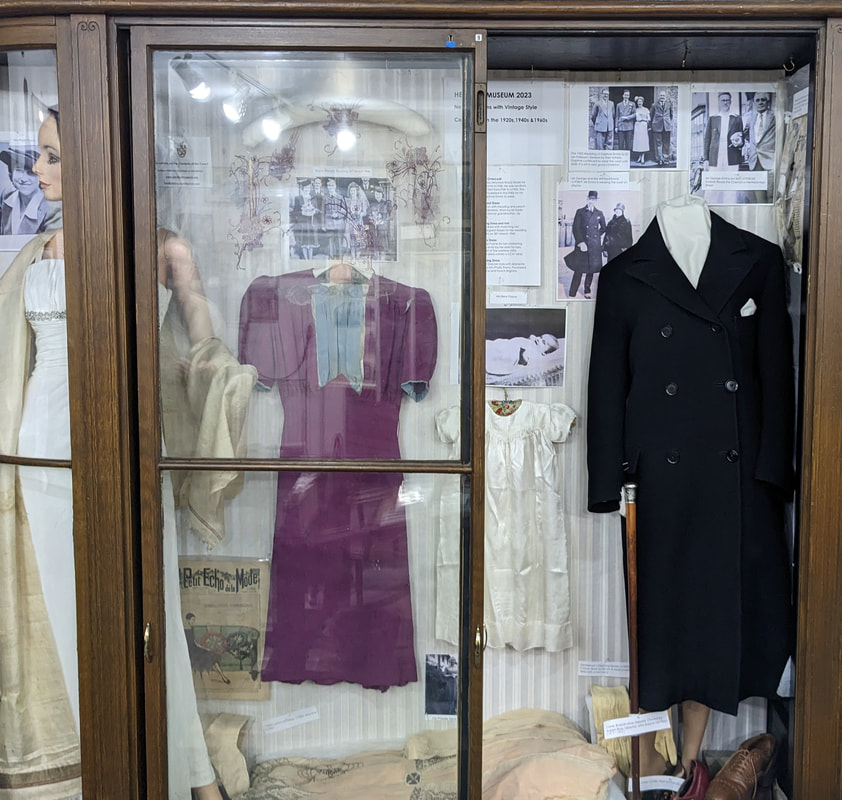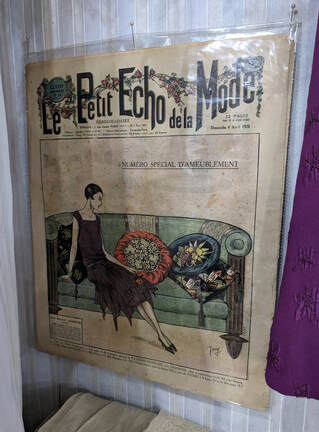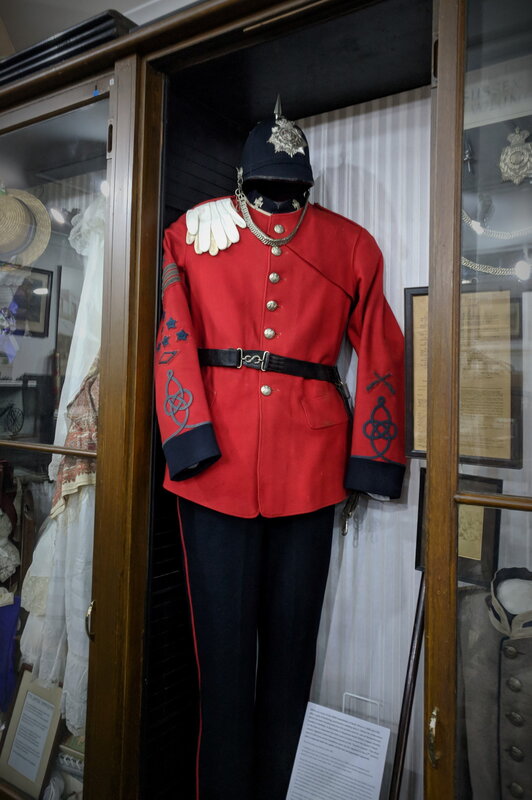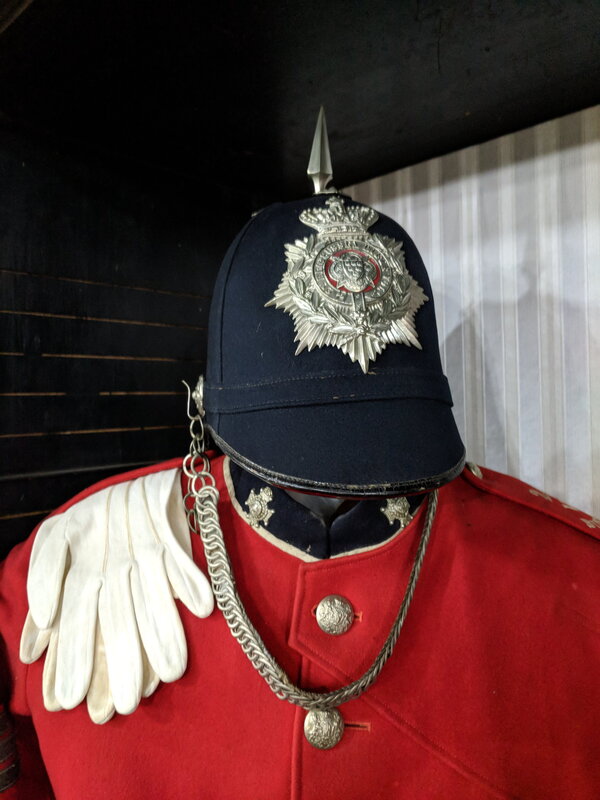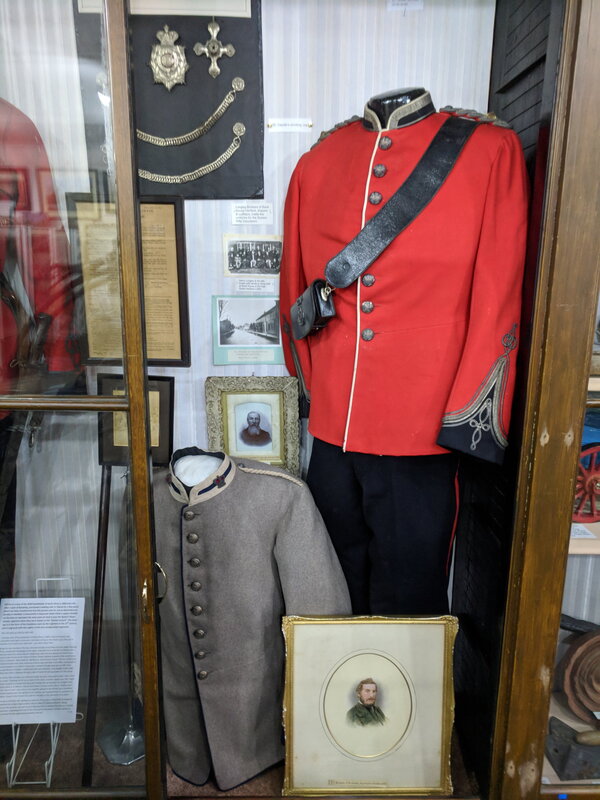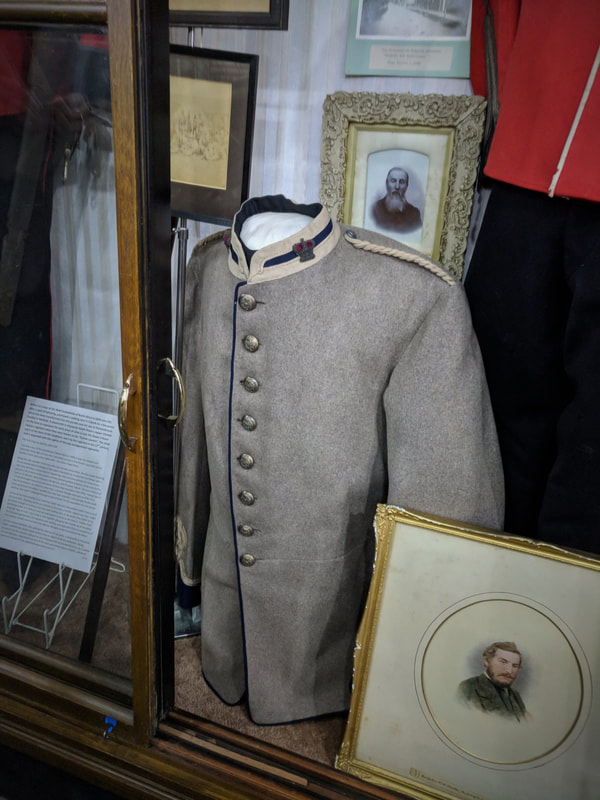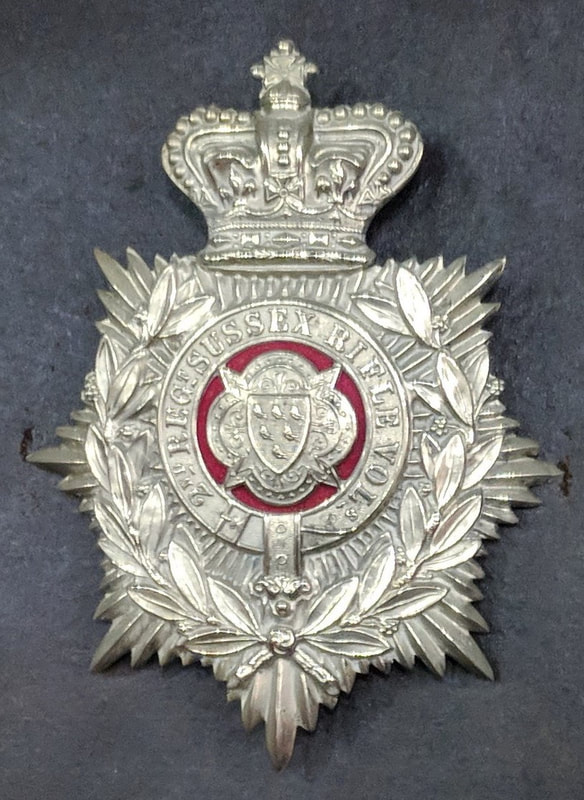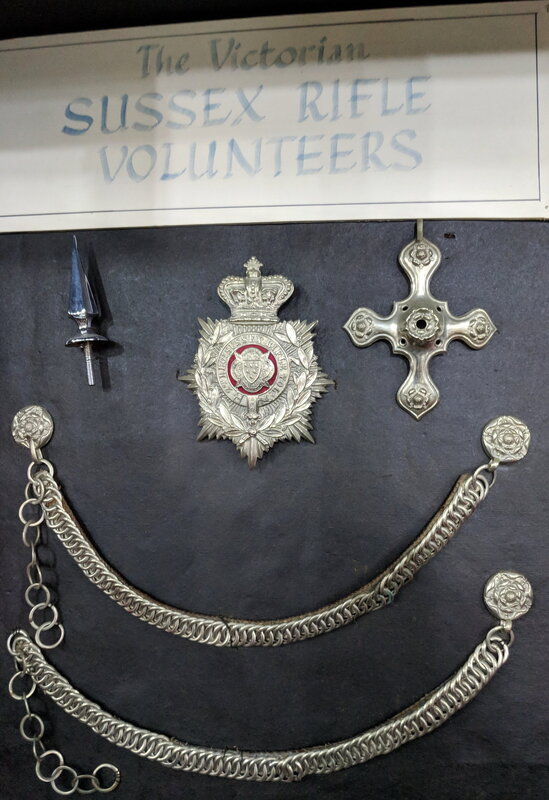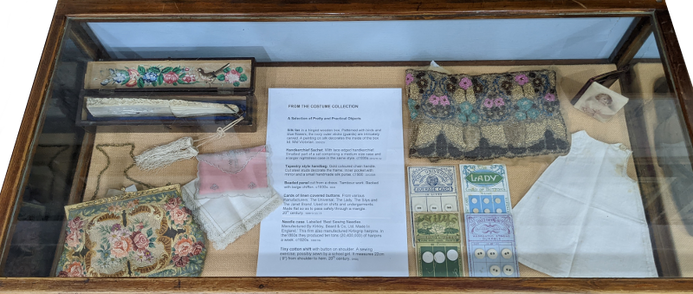Discover which treasures from our costume collection are currently on display...
New Donations with Vintage Style
(March 2023 - March 2024)
|
Costume from the 1920s, 1940s and 1960s. The case contains a collection of recent donations to the museum costume stock. Exhibits range from a graceful evening gown to a sturdy woollen overcoat with a long story and two trips across the Atlantic in its history. The 1920s are represented firstly by a blush pink silk chiffon beaded cocktail dress. The silk is badly shattered, but the beads still sparkle. And in complete contrast a barathea (worsted wool) overcoat that started life as a mans coat in 1928 and was later altered and worn by the daughter of the original owner in Canada until 2022. Likewise the 1940s boast two items in the display. There is a cyclamen pink wedding dress and veil from 1940 and a babies dress, complete with CC41 utility label, that was used as a christening dress by two sisters. The 1960s white Grecian style draped evening gown has diamenté embellishments at the bodice and on the hip. This gown came from Barrance & Ford, a long gone dress shop in Brighton. To accompany the clothes we have a wonderful display of photographs of the owners and wearers of the majority of the items. So you can see what the wedding dress, coat and babies dress all looked like on the owners. All of these items enrich the Henfield Costume collection and help to illustrate what people wore to keep warm, get married, get christened and go out for the evening in the 20th century. Stephanie Richards Curator of Costume |
The Sussex Rifle Volunteers
|
On permanent display
The vivid Victorian uniforms pictured were all made in the 1860s by the long established Longley Brothers Drapers who were based at Bank House in Henfield High Street. On display are the uniforms of Surgeon Lieutenant (and well known Henfield doctor), Adolphus Caudle the Younger (1860s), in addition to that of Sergeant George Roberts (1868). With recruits having to fund their own uniform and rifle, joining the Volunteers was an aspiration beyond the average Henfield labourer and mainly open to professional men. A Victorian precursor to the modern Territorials, the Rifle Volunteers were replaced by the Territorials during the army reforms that took place in the years after the Boer War. |
A Selection of Pretty and Practical Objects
Discover the intricately made details of a miscellany of smaller items from the collection
Including a richly decorated mid Victorian ivory and silk fan, an intricate c. 1900 floral tapestry style handbag, early 20th century linen covered button cards, a 1920s Kirby, Beard & Co. needle case, a 1930s handkerchief sachet, a 1930s beaded tambour panel, and early 20th century cotton shift made as a sewing exercise. (But no cuddly toy!)
Including a richly decorated mid Victorian ivory and silk fan, an intricate c. 1900 floral tapestry style handbag, early 20th century linen covered button cards, a 1920s Kirby, Beard & Co. needle case, a 1930s handkerchief sachet, a 1930s beaded tambour panel, and early 20th century cotton shift made as a sewing exercise. (But no cuddly toy!)
Images on this page are licensed for educational and non commercial use under the Creative Commons Attribution-NonCommercial-ShareAlike (CC BY-NC-SA) . Please credit 'Henfield Museum' and contact us if you would like to use an image for commercial purposes or at a higher quality.
Website funded by the Friends of Henfield Museum, built & maintained by R. S. Gordon. Credit to Mike Ainscough for moving the website idea from discussion to reality.
© Henfield Museum. All rights reserved except where stated otherwise.
